

A Gallery of Archetypes. A Gallery of Archetypes The archetypes listed here in boldface type are just a few of the many ancient patterns that exist in human consciousness.
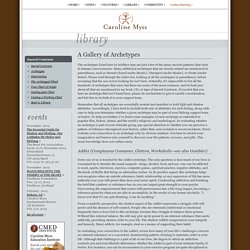
Many additional archetypes that are closely related are mentioned in parentheses, such as Hermit (found under Mystic), Therapist (under Healer), or Pirate (under Rebel). Please read through the entire list, looking at all the archetypes in parentheses, before assuming that the one you're looking for isn't here. The Four Archetypes of Survival. The Four Archetypes of Survival.
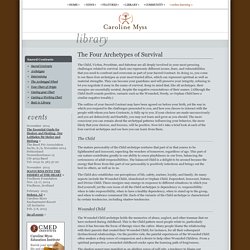
Winter10-inner-child.pdf. Carl Jung, part 1: Taking inner life seriously. If you have ever thought of yourself as an introvert or extrovert; if you've ever deployed the notions of the archetypal or collective unconscious; if you've ever loved or loathed the new age; if you have ever done a Myers-Briggs personality or spirituality test; if you've ever been in counselling and sat opposite your therapist rather than lain on the couch – in all these cases, there's one man you can thank: Carl Gustav Jung.
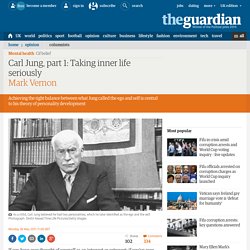
The Swiss psychologist was born in 1875 and died on 6 June 1961, 50 years ago next week. His father was a village pastor. His grandfather – also Carl Gustav – was a physician and rector of Basel University. He was also rumoured to be an illegitimate son of Goethe, a myth Carl Gustav junior enjoyed, not least when he grew disappointed with his father's doubt-ridden Protestantism. Jung's mother was a more powerful figure, though she seems to have had a split personality.
No 1 was the child of his parents and times. Jung finally came into his own at university. The Shadow: Our Darker Side. The Jungian shadow is composed of the dark and unknown aspects of personality.

The shadow is created by the oppositeness of life and the need for choice. To choose to be one way is to choose not to be another. The shadow is made up of the "unchosen" choices. Analytical-psychology-theories-of-personality-carl-jung-12-638.jpg (JPEG Image, 638 × 479 pixels) Carl-jung-6-638.jpg (JPEG Image, 638 × 479 pixels) Google 搜尋 圖片的結果. Final-jung-6-638.jpg (JPEG Image, 638 × 479 pixels) Carl-jung-quote.jpg (JPEG Image, 888 × 888 pixels) Beggar-jung-quote-1024x754-300x220.png (PNG Image, 300 × 220 pixels) Cjunginnerchild.jpg (JPEG Image, 518 × 800 pixels)
Quiz: The 36 Questions That Lead to Love. Set I 1.
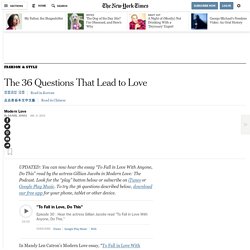
Given the choice of anyone in the world, whom would you want as a dinner guest? Homecoming: Reclaiming and Healing Your Inner Child - John Bradshaw - Google 圖書. Are you outwardly successful but inwardly do you feel like a big kid?

Do you aspire to be a loving parent but all too often “lose it” in hurtful ways? Do you crave intimacy but sometimes wonder if it’s worth the struggle? Or are you plagued by constant vague feelings of anxiety or depression? If any of this sounds familiar, you may be experiencing the hidden but damaging effects of a painful childhood—carrying within you a “wounded inner child” that is crying out for attention and healing. In this powerful book, John Bradshaw shows how we can learn to nurture that inner child, in essence offering ourselves the good parenting we needed and longed for. Health Psychology Consultancy. The idea of the Inner Child has been around for a long time in western psychology, and serves a useful purpose in helping emotionally troubled adults resolve personal struggles.
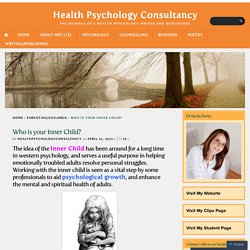
Working with the inner child is seen as a vital step by some professionals to aid psychological growth, and enhance the mental and spiritual health of adults. Who is your Inner Child? In popular psychology, the Inner Child concept – also called the Divine Child, Wonder Child, the True Self, or simply, the Child Within – refers to a part of the adult personality that houses child-like and adolescent behaviours, memories, emotions, habits, attitudes, and thought patterns.
It’s generally seen as an autonomous sub-personality with its own needs, desires, issues and goals. In this sense, the inner child functions independently, and sometimes in opposition to, the more mature parts of the adult personality. H.A.L.T. - Hungry, Angry, Lonely & Tired. When we stop using drugs and alcohol, we become familiar with the acronym H.A.L.T.
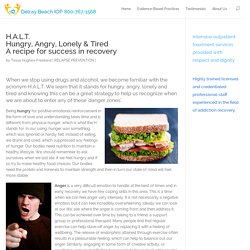
We learn that it stands for hungry, angry, lonely and tired and knowing this can be a great strategy to help us recognize when we are about to enter any of these ‘danger zones’. Being hungry for positive emotional reinforcement in the form of love and understanding takes time and is different from physical hunger, which is what the H stands for. In our using, hunger was something, which was ignored or hardly felt.
H.A.L.T. - Hungry, Angry, Lonely & Tired. Fuzzy Thinking in Early Addiction Recovery. We can expect the first few months after we stop drinking or doing drugs to be extreme.
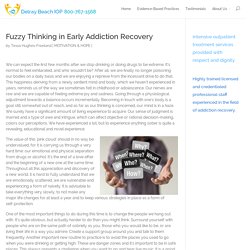
It’s normal to feel exhilarated, and who wouldn’t be? After all, we are finally no longer poisoning our bodies on a daily basis and we are enjoying a reprieve from the incessant drive to do that. This happiness deriving from a newly sentient mind and body, which we haven’t experienced in years, reminds us of the way we sometimes felt in childhood or adolescence. Our nerves are raw and we are capable of feeling extreme joy and sadness. Going through a physiological adjustment towards a balance occurs incrementally. The value of this ‘pink cloud’ should in no way be undervalued, for it is carrying us through a very hard time: our emotional and physical separation from drugs or alcohol.
One of the most important things to do during this time is to change the people we hang out with. Delray Beach IOPDelivering the highest level of care to the addiction recovery community. Changing Shame-Based Behavior. It’s easy to see how people recovering from addiction have turned to drugs or alcohol to deaden the pain caused by shame-based thinking — a common trait in addictive people — and why correcting self-destructive thinking and behavior is essential to a successful recovery.
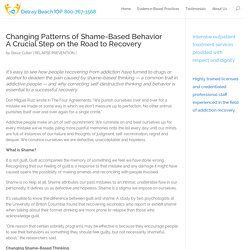
Shame - The Disowned Part of the Self - article by Dr. Lynne Namka.